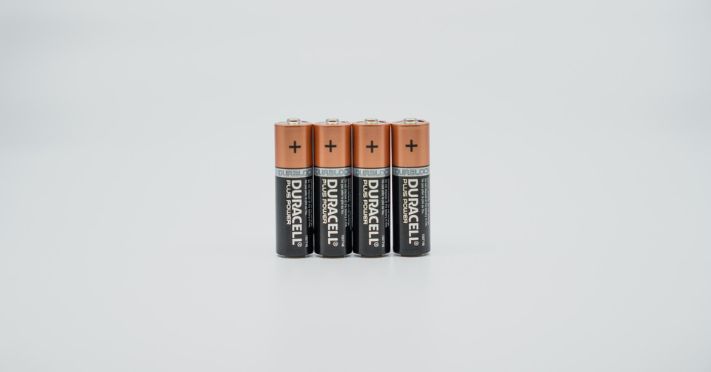We’re frequently asked, “What will happen to lithium-ion batteries after they’re past their useful life for bicycles, cars, and scooters?” It wasn’t until recently the only answer was to use them (at least the 18650 and 21700 size — very common cells that are 18x65mm and 21x70mm, respectively) as solar electric storage, such as for a Tesla Powerwall. Many examples exist of people using these semi-spent cells in DIY versions of Powerwalls to store energy and power their homes.
Understanding Lithium-Ion Battery Lifecycles
Lithium-ion batteries don’t usually die outright but rather lose capacity over time with charging. Often the batteries will be rated for 500 to 1,000 full charges. Partial charges count as part of that, and we’ve even written stories in length on how to care for your batteries to get the most out of them, like storing them during the winter months at 40% charge instead of 100%.
Eventually, your e-bike battery will offer a fraction of the range it did when new, and that’s when you need to replace it. Though the cells in it can technically be used for home storage or similar, they can now be recycled almost completely.
The Raw Battery Materials
The raw materials for a lithium-ion battery include lithium, mined or extracted from brine water in Bolivia, Argentina, and Chile. The form of lithium recovered by evaporation is lithium carbonate, which is the raw material used in making lithium batteries. The process also includes magnesium, calcium, potassium, and sodium. One of the issues with this operation is that it takes up to three years to move the brine to different pools to evaporate.
Cobalt is the ubiquitous cathode material for the batteries. It is mined, usually by hand, in the Democratic Republic of Congo. The conditions are generally dangerous due to the lack of strong health and safety regulations. Roughly 40-50% of these mines are Chinese-owned, and much of the materials are shipped to China for further processing.
As you might imagine, this means the global shipment of materials. Other materials are either shipped into China or the States to a Tesla Gigafactory, for example, meaning a battery cell can have its materials travel around the globe to get to where they’re being made. That’s hardly carbon neutral.
The Tesla Guy
Tesla’s Elon Musk is well aware of this issue and is trying to set up his Gigafactories worldwide to source more local materials. His announcement of developing a new 4680 battery changed quite a few things. The internal structure eliminates tabs, increases capacity, improves the power-to-weight ratio, and lowers the overall battery cost by 56%.
This new cell and its manufacturing will source local supplies, and most of the designs eliminate the use of cobalt as a cathode. Tesla is looking at a high-nickel cathode for this, which has significant cost savings and human resources. This new rewrite of the entire battery design will have bigger implications than just the unit cost; it will cut millions of tons of carbon emissions caused by shipping materials globally to assemble the batteries.
This design also gets Tesla close to the goal of a 1-million-mile battery. Currently, consumers don’t usually drive vehicles that far, so this opens the door to reusing the batteries in new cars. GM seems to have a similar battery plan for their cars, especially since they plan to only sell electric vehicles by 2035. As more electric cars and bikes are sold, more batteries are being used. At some point, they reach the end of their useful life. Mining new materials isn’t great for the environment, and it would make sense to recover them.
The Battery Solution
J.B. Straubel, one of the co-founders of Tesla, believes that electric vehicles represent the future of transportation but recognizes the spent batteries issue. This challenge was so compelling he left his position as chief technical officer after 15 years at Tesla to found Redwood Materials in 2017. The company’s goal is to recycle all the materials in lithium-ion batteries. Not just the ones used in cars and bicycles but also the ones in smartphones, laptop computers, and all other battery-powered devices.
Its first factory was set up in Reno, next to the Tesla Gigafactory. So far, Redwood Materials has recovered up to 98% of the raw materials involved and sold them back to manufacturers, like Panasonic, which operates inside the Gigafactory. It plans to create a circular supply chain, which should eventually cut the need for new raw materials. But the company will have to scale massively — as will competitors like Li-Cycle and even Volkswagen — as it’s currently only able to process a fraction of the spent batteries on the market.
Panasonic and Amazon are both heavily investing in Redwood, the former being a battery manufacturer and the latter being a seller of consumer products that use lithium-ion batteries that ordered 100,000 electric delivery vans from EV manufacturer Rivian.
E-Bike Battery Connections
Specialized has a partnership with Redwood Materials to recycle its e-bike batteries which, with e-bikes outselling all other electric vehicles, is a great step towards greater sustainability. The partnership isn’t just to recover the materials but also to help Specialized design better recyclable products. The company plans on sharing the knowledge they gain with the entire industry and other micro-mobility categories to encourage responsible design and recycling methods. Specialized says that most of their e-bike batteries have not yet reached the end of life, but they’re planning ahead to get in front of the batteries’ long-term impact and help improve the design practices involved.
If you want to send devices with lithium-ion batteries to Redwood Materials for recycling, you can send them to Redwood directly or drop them off.
Gain more e-bike knowledge by reading about the problems with cheap electric bikes and finding out more about popular e-bike accessories.

